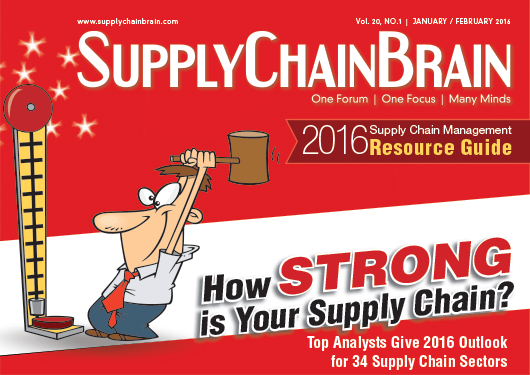
Visit Our Sponsors |
|
|
|
|
|
|
|
|
|
|
|
|
|
|
|
|
|
|
|
|
|
|
|
|
|
|
|
|
|
|
|
|
|
|
|
|
|
|
|
|
|
|
|
|
|
|
|
|
|
|
|
|
|
|
|
|

Brick-and-mortar stores aren't going away. Stores are a critical link in the growing click-and-collect trend. In a recent UPS survey, 38 percent of consumers said they choose in-store pickup options for their online orders when available. However, survey results indicate only 21 percent of U.S. retail executives said they had the technology in place for in-store pickup or return of online goods to store.
Next to inventory, transportation is the second-largest cost a company has. Companies can no longer absorb the rising cost of parcel shipping associated with e-commerce. Customers seem hesitant to pay more than $5 or wait more than 5 days for delivery of most online purchases. Parcel carriers have shown an unwillingness to bear the cost of consumers’ home-delivery expectations. They're changing the model with peak and dimensional weight pricing. But where e-commerce orders can ride along with shipments already going to the store, click and collect provides a way for customers and retailers to benefit in the new economy of shipping.
Retailers benefit from getting the customer in the store where it’s likely they’ll make additional purchases. This is especially true for retailers that offer in-store services where driving foot traffic is critical. With the right systems in place, stores can also offer shoppers the convenience of allowing them to return products purchased online. It’s a winning scenario for retailers who reduce the burden of returns on the DC, make the product available for resale faster, and in the process, get another sale touch point with the customer.
In Europe click-and-collect lockers, kiosks and service desks are commonplace. And U.S. retailers are catching on quickly. Last year, Target incentivized in-store pickup by offering $10 off any online order in exchange for the customer choosing in-store pickup. And pure play online retailers are opening physical stores as they find they can’t access the growing share of revenue from click and collect without physical locations (i.e.; JustFab, Warby Parker, Bonobos). Even Amazon, whose shipping cost is double what it charges, is experimenting with ways to deliver products to pick up locations (lockers).
It's a great example of customer service - and using the customer’s desire to get products faster and less expensively to the company’s financial advantage. Although a customer might be willing to use digital channels as a source for information, a trip to the store is still relevant and a physical store presence for pick-up can be an actual advantage.
But inventory visibility and accuracy is absolutely critical to setting customer expectations outside the four walls of the DC. Companies face the greatest challenges in achieving complete inventory visibility across the entire network. Click and collect requires both accurate, real-time systems to manage orders and labor to fulfill orders quickly and accurately for a seamless customer experience.
The Outlook
Click and collect is one way many retailers are choosing to address growing customer expectations for free, fast delivery of products. And the benefits go beyond the pickup. It’s about incremental revenue, better customer service, and ultimately, competitive advantage. Look for ways to achieve greater inventory accuracy and visibility across the network to take advantage of the opportunities.
RELATED CONTENT
RELATED VIDEOS
Timely, incisive articles delivered directly to your inbox.


